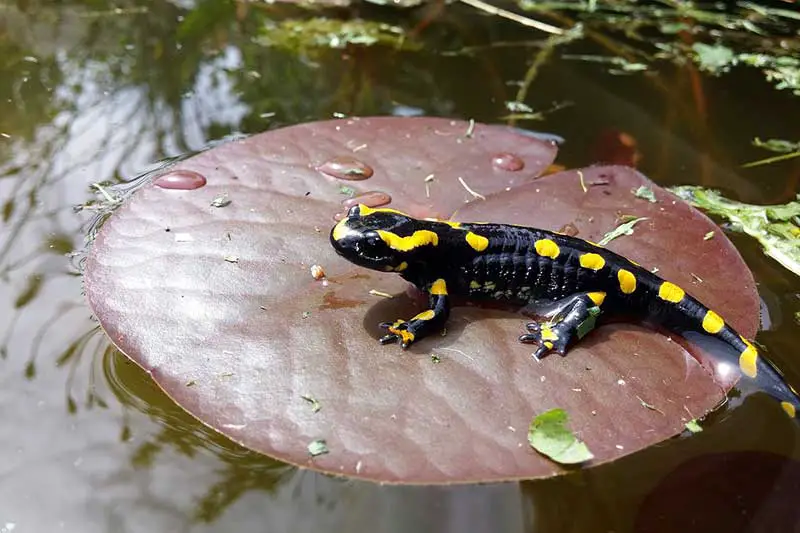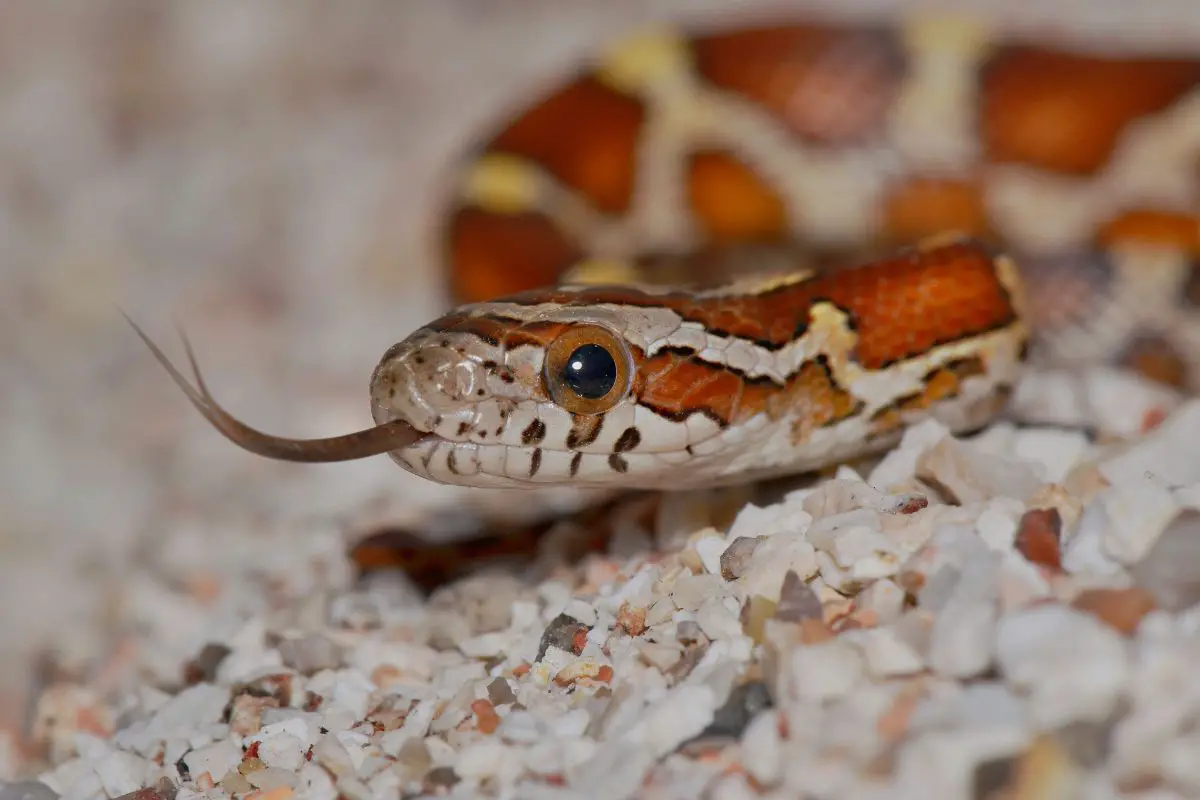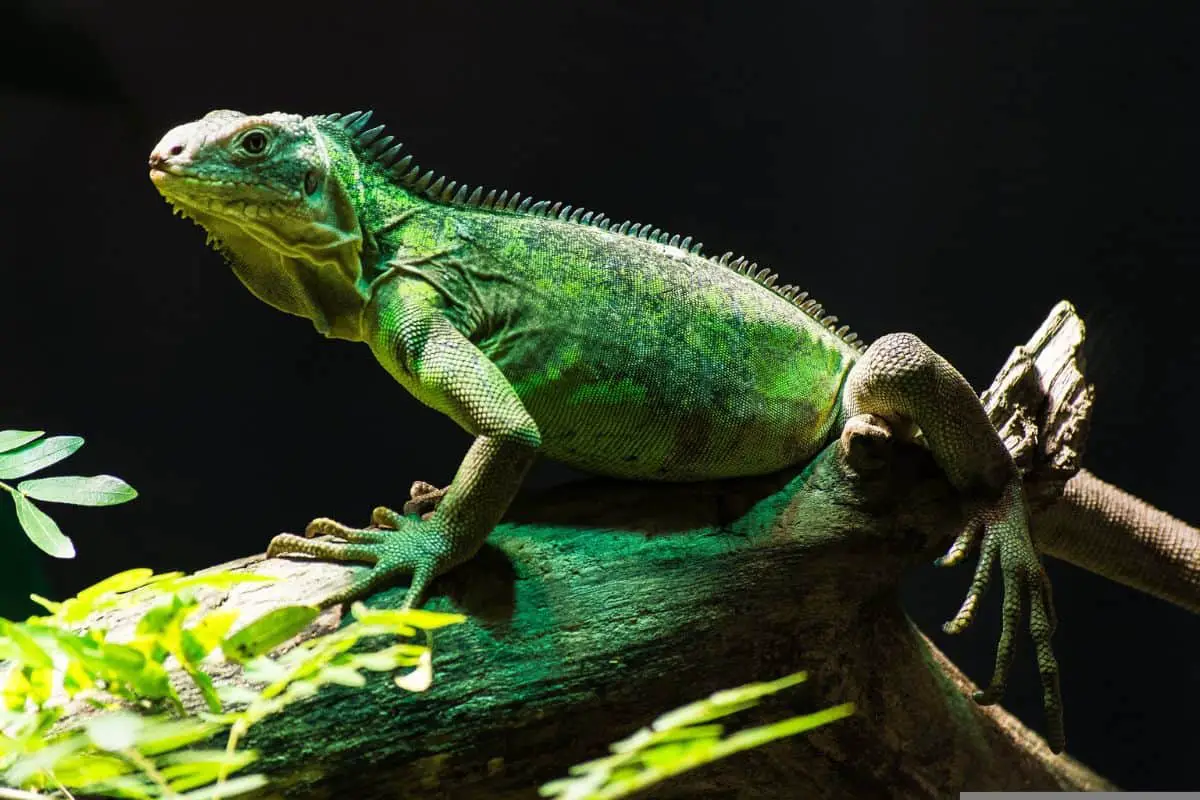Salamanders are amphibians with a similar body shape to lizards, but they aren’t lizards at all. Some salamanders are completely terrestrial, others are semi-aquatic, and a handful are fully aquatic. There are many different species of salamanders in Virginia, and this list is far from comprehensive. Still, each of these is native to the state and is fairly easy to recognize.
So let’s have a look at some of Virginia’s most common salamanders!
16 Salamanders in Virginia
1. Jefferson Salamander
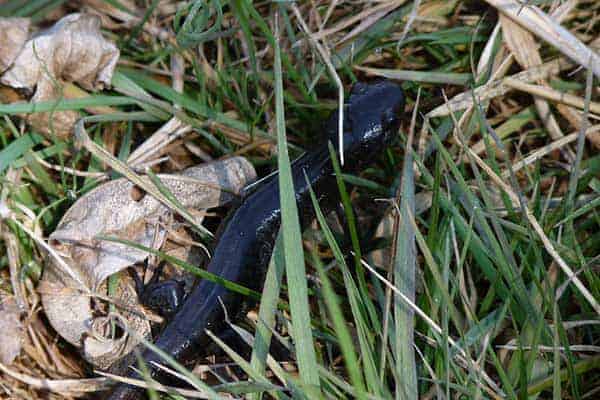
Scientific name: Ambystoma jeffersonianum
A fairly large salamander that can grow to 7 inches long, this species is a dark brown color with pale blue spots that fade as they age. They can be found in northwestern Virginia in counties that border West Virginia. They live in burrows in forested areas near wetlands, and are rarely seen above ground.
Because they spend so much of their time underground, we don’t know a whole lot about their feeding habits, but it’s believed that they eat mainly earthworms and other underground invertebrates.
2. Mabee’s Salamander
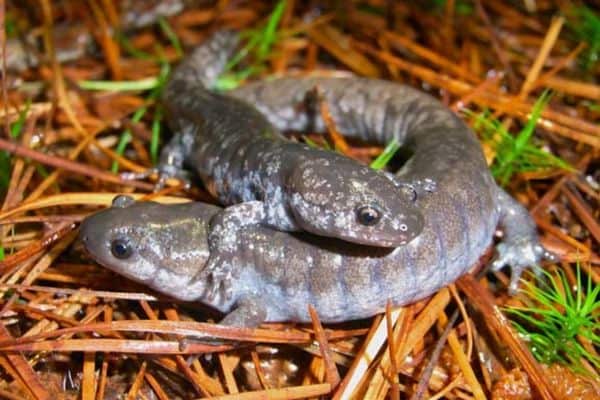
Scientific name: Ambystoma mabeei
Mabee’s salamander inhabits a smaller part of coastal southeastern Virginia. They have brown bodies with silvery flecks, and grow to about 4 inches in length. They’re a largely terrestrial species, inhabiting grasslands, open forests, and pine forests.
Earthworms appear to be the primary food source for this species as adults, while the larvae feed on zooplankton.
3. Spotted Salamander
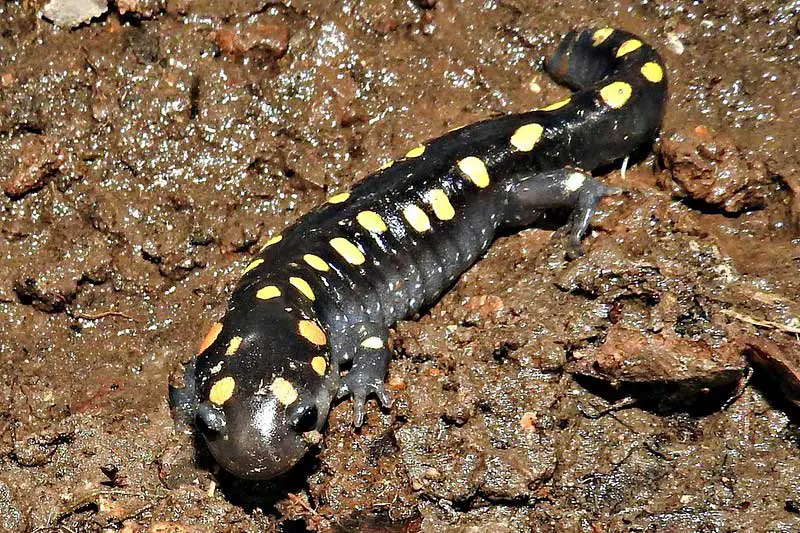
Scientific name: Ambystoma maculatum
Common throughout most of the state, the spotted salamander grows to almost 8 inches long with a greyish-black body and yellow spots, for which it’s named. They like forested areas, particularly in floodplains, and tend to spend much of their time hidden under moist cover like leaf litter and rotting vegetation.
They have a very broad diet that includes all kinds of invertebrates on the forest floor, such as earthworms, molluscs, and insects. Like other types of salamanders, they can regrow their limbs if they are lost.
4. Marbled Salamander
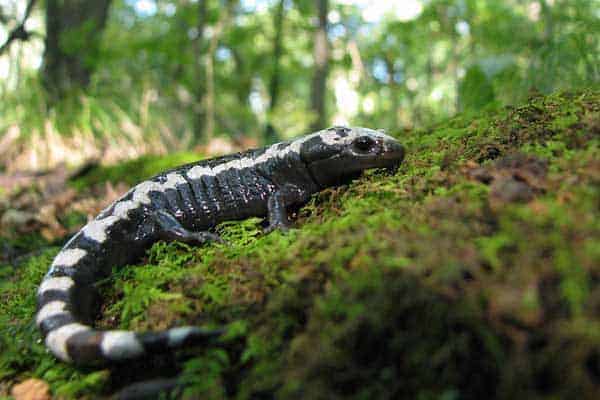
Scientific name: Ambystoma opacum
A deep black color with silver or white bands gives this species it’s name. Growing to a little over 4 inches in length, they’re found throughout most of Virginia. They spend most of their time in burrows and under the leaf litter of the deciduous forests they like to live in.
Not much is known about their feeding habits but presumably they mainly feed on earthworms and other small invertebrates.
5. Mole Salamander

Scientific name: Ambystoma talpoideum
A dark brown, almost black salamander with blue speckles, the mole salamander is found mainly in south-central Virginia. This species doesn’t always undergo metamorphosis, and so there are adult populations which remain fully aquatic.
They feed on a wide range of invertebrates, including zooplankton, invertebrates, and tadpoles.
6. Eastern Tiger Salamander
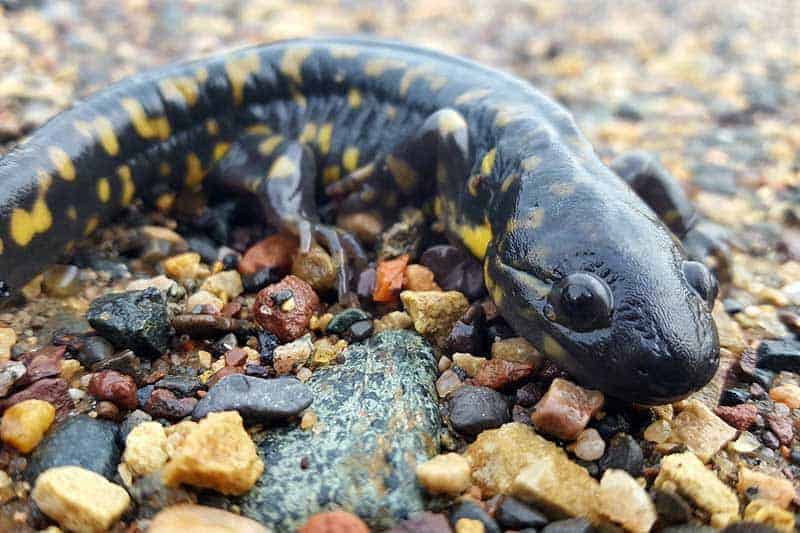
Scientific name: Ambystoma tigrinum
Around 7-8 inches is the average size for this species, but lengths of 13 inches have been recorded before. It’s a mottled brown with lighter brown spots and patches that vaguely resemble the pattern of a tigers stripes. It’s only found in isolated pockets of Virginia, and it’s one of the rarer species of salamander.
Adults may be terrestrial or aquatic, with terrestrial adults digging burrows to live in. The terrestrial adults eat many different species, including lots of different invertebrates and even mice. Aquatic adults will eat worms, insects, and tadpoles.
Tiger salamanders are also commonly kept as pets.
7. Two-toed Amphiuma

Scientific name: Amphiuma means
Growing to nearly three feet in length, this is a very large salamander that is found in southeastern Virginia. It has a long, eel-like body with legs so small they’re essentially useless. They’re almost entirely aquatic, preferring lakes and slow-moving rivers and favoring shallow water with lots of vegetation.
They’re highly opportunistic predators, eating fish, reptiles, insects, and other amphibians. In fact, fisherman often catch them because they strike the same baits as many of the fish in the area.
8. Green Salamander
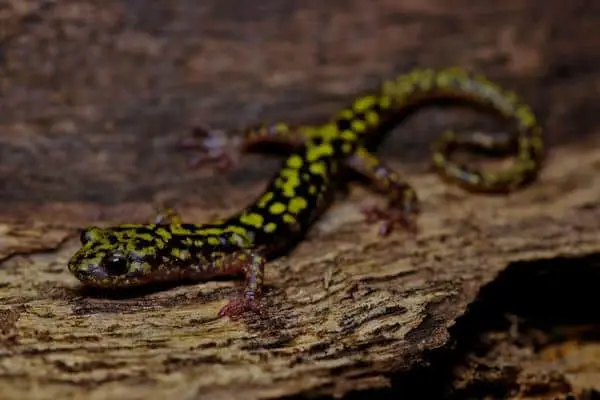
Scientific name: Aneides aeneus
This 5-inch long salamander is really more yellow than green, and it’s found mostly in the western tip of Virginia. They are often found hiding under the bark on logs on the forest floor, and have also been found living in caves.They’re also commonly found on rock outcrops in wooded areas.
Their diet is assumed to consist primarily of small invertebrates, but there isn’t a lot of data yet on their feeding habits.
9. Eastern Hellbender
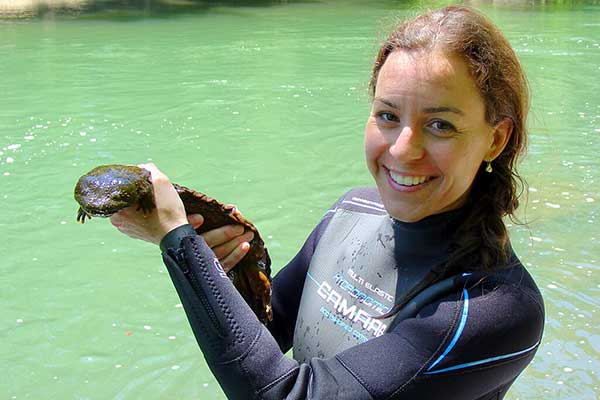
Scientific name: Cryptobranchus alleganiensis alleganiensis
The eastern hellbender is considered to be one of 3 giant salamanders in the world, and the largest salamander in the United States. This fully aquatic salamander that has a wide, flattened head, a keeled tail, and a stocky body with lots of fleshy skin folds that help it blend in to the river or lake bottoms it inhabits. They prefer to live in fast-flowing streams with rocky bottoms, where they can hide easily.
They eat crayfish, and will occasionally eat small fish, snails, and even other hellbenders. However, crayfish are by far their most important food source.
10. Southern Dusky Salamander
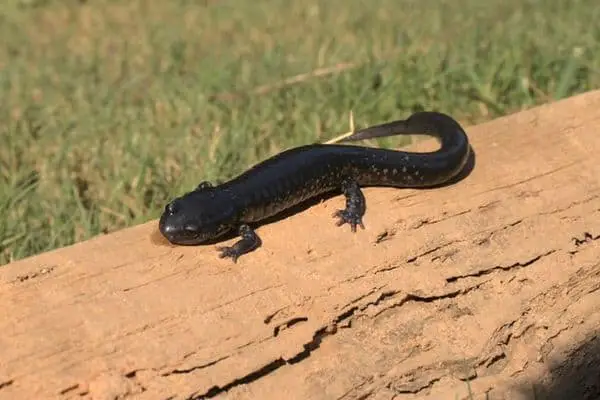
via Flickr
Scientific name: Desmognathus auriculatus
With a dark brown back and a mottled white and brown belly, the southern dusky salamander is well-camouflaged in the swamps and wetlands it likes to inhabit. When they’re not in the water they can often be found under rocks and logs at the water’s edge.
11. Northern Dusky Salamander
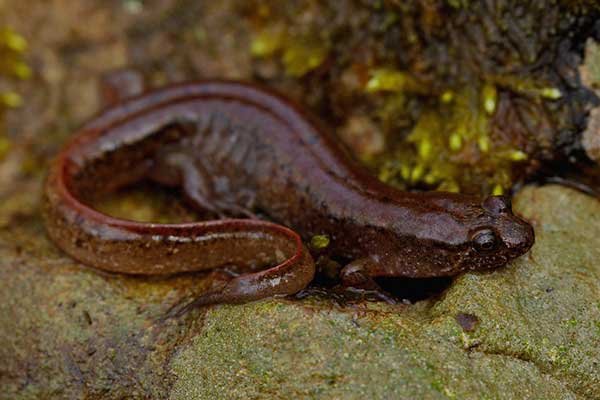
Scientific name: Desmognathus fuscus
Far more numerous and widespread in Virginia than the southern dusky salamander, the northern dusky is also a lighter, more uniform shade of reddish brown. It avoids swamps and prefers wooded streams with lots of underwater vegetation.
Adults will eat just about any invertebrate that they can catch, including plankton, insects, and worms.
12. Shovel-nosed Salamander
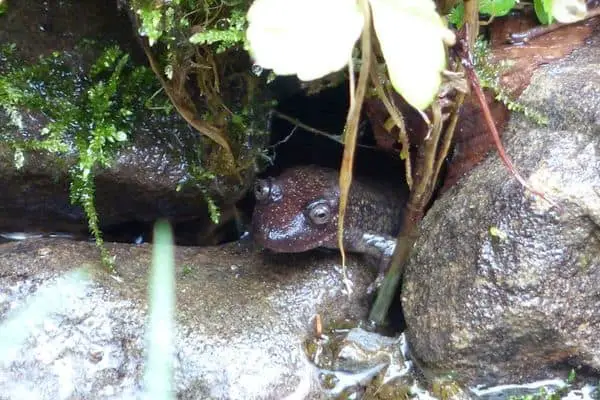
Scientific name: Desmognathus marmoratus
A big, stock salamander with dark brown skin and yellow-brown splotches, the shovel-nosed salamander likes to live in shallow streams and favors fast moving water, leading to higher concentrations of them in and near rapids.
They eat aquatic invertebrates, especially insects, crayfish, and snails.
13. Seal Salamander
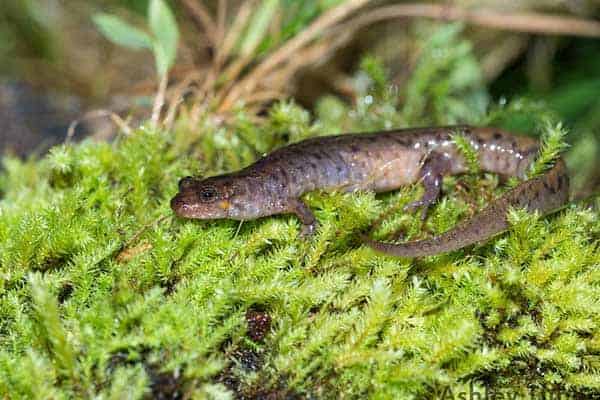
Scientific name: Desmognathus monticola
Spread throughout the western part of the state, the seal salamander is light brown with black spots and a pale belly. They like hardwood forests with fast moving, cool streams. They’re nocturnal, with adults usually waiting at the mouths of their burrow to ambush their prey. Bugs, beetles, mayflies, wasps, ants, milipedes, and earthworms are all favored prey items.
14. Alleghany Mountain Dusky Salamander
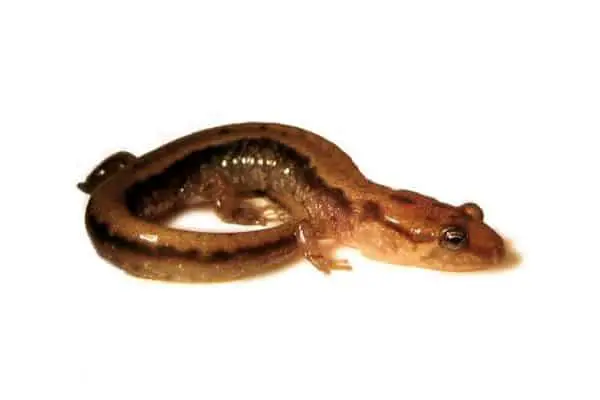
Scientific name: Desmognathus ochrophaeus
Usually a drab brown color with light spots, this species is found in the western, mountainous part of the state. Moist woodlands, wet rock faces, and small streams are their preferred habitats.
They’re ambush predators that eat small invertebrates including insects, snails, and earthworms.
15. Blue Ridge Dusky Salamander
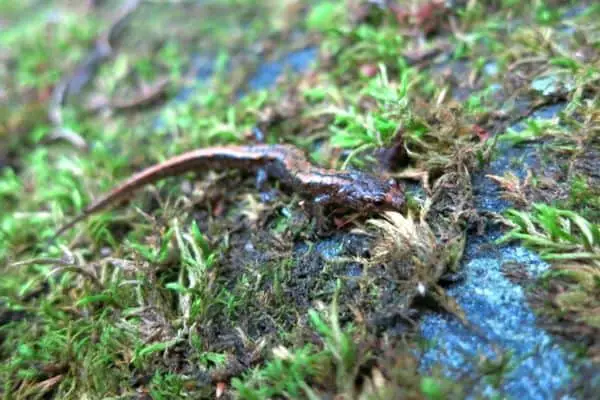
Scientific name: Desmognathus orestes
Very similar in appearance to the Alleghany dusky salamander, the Blue Ridge dusky likes mountainous, forested habitats. They favor wet rock faces and areas of the forest floor near streams and creeks.
There is no data available on their diet, but it’s very likely the same as the Alleghany dusky.
16. Eastern Newt

Scientific name: Notophthalmus viridescens
The Eastern newt, also known as the Red-Spotted newt, can be found throughout Virginia near permanent or semi-permanent water bodies. Despite its name, its color ranges from red to olive green or yellowish-brown in order to camouflage into its environment.
As juveniles, these newts are terrestrial but will become semi-aquatic as they grow. Eastern newts are carnivorous throughout their lives and feed on various insects and invertebrates.
